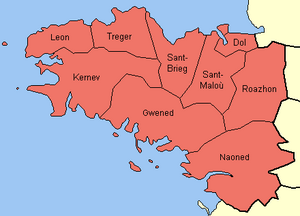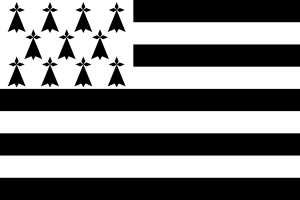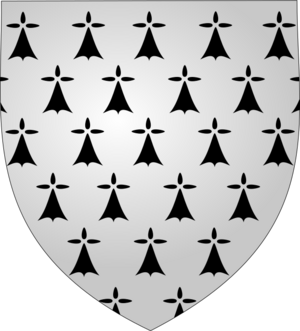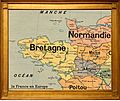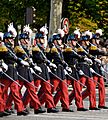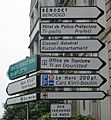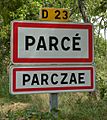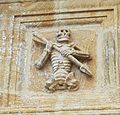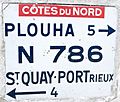Brittany facts for kids
Brittany is a special region in Northwest France. In the Breton language, it's called Breizh. In French, it's known as Bretagne. When we talk about things from Brittany, we use the word Breton.
Brittany is located in the west of France. Its long coastline stretches out into the Atlantic Ocean. Thanks to the warm Gulf Stream current, Brittany has a mild climate. This means it has warm summers and wet winters.
Today, the official region of Brittany has four main areas called departments:
Before 1941, a fifth department, Loire-Atlantique, was also part of Brittany. This included the city of Nantes. These five departments together make up what is known as "historical Brittany."
Three languages have been traditionally spoken in Brittany:
- The Breton language is spoken in the western part. It's a Celtic language, similar to Cornish.
- Gallo is spoken in the eastern part. This is a Romance language.
- French is spoken everywhere in Brittany.
The capital city of Brittany is Rennes. It's a busy and exciting city located in the Ille-et-Vilaine department.
Contents
Exploring Brittany's Name and History
The name Brittany is connected to Great Britain. In French, Great Britain is called Grand Bretagne. Because of this, Brittany has sometimes been called Lesser Britain or Little Britain.
How Brittany Got Its Name
After the Anglo-Saxons started moving into Great Britain in the 400s AD, many Ancient Britons moved across the sea to this region. These tribes gave Brittany its name. They also brought the Breton language and many local place names. Their culture became a big part of Brittany's identity.
Brittany's Journey to Join France
Brittany was its own separate country starting in the 800s. It stayed independent until 1532. That's when it officially became part of France. For a long time, it was a province of France. Then, during the French Revolution, its land was divided into the departments we know today. Brittany got its own regional government back in the 1980s.
Amazing Stone Structures
Brittany is home to something truly amazing: the world's largest collection of standing stones in one place. These ancient stones are known as the Carnac stones. They are a mystery from the past!
What Brittany is Known For
Brittany's main industry is agriculture. This means farming. Farmers in Brittany are especially known for:
- Raising pigs
- Raising chickens
- Growing maize (corn) to feed farm animals
Did you know that Brittany is also the name of a dog breed? These dogs are known for being friendly and good at hunting.
Images for kids
-
The Carnac stones
-
The Brythonic community around the 6th century. The sea was a communication medium rather than a barrier.
-
A 1922 nationalist engraving of Nominoe, first king of Brittany
-
Anne of Brittany is regarded in Brittany as a conscientious ruler who defended the duchy against France.
-
Province of Brittany (1789) - showing internal borders of five new departments: Côtes-du-Nord (now Côtes-d'Armor), Finistère, Ille-et-Villaine, Loire-Inférieure (now Loire-Atlantique) and Morbihan.
-
A Royal Air Force attack on Saint-Malo in 1942
-
The Pink Granite Coast around Trégastel
-
A bog around the Monts d'Arrée
-
An ocean sunfish exhibiting its characteristic horizontal basking behaviour several miles off Penmarch
-
RMS Queen Mary 2, once the world's largest passenger ship, was built in Saint-Nazaire.
-
A fishing trawler from Le Guilvinec
-
Rennes, the most populated city in Region Brittany and the second in historical Brittany, behind Nantes
-
A chapel and a calvary in Locronan, Finistère
-
A sculpted Ankou in Ploudiry
-
The Beautiful Angèle by Paul Gauguin
-
Roazhon Park in Rennes
-
Galettes served with eggs and sausages
-
The Morlaix railway viaduct is one of the highest in France.
-
Merlin's tomb in the Brocéliande forest, Paimpont
-
Castle of Saint-Malo, Qui Qu'en Grogne Tower
-
Parlement of Brittany in Rennes
-
Ar Meilhoù Glaz, a Bagad from Quimper
-
Festival du chant de marin, sea songs festival in Paimpol
-
Men Ruz lighthouse, Ploumanac'h
See Also
 In Spanish: Bretaña para niños
In Spanish: Bretaña para niños


